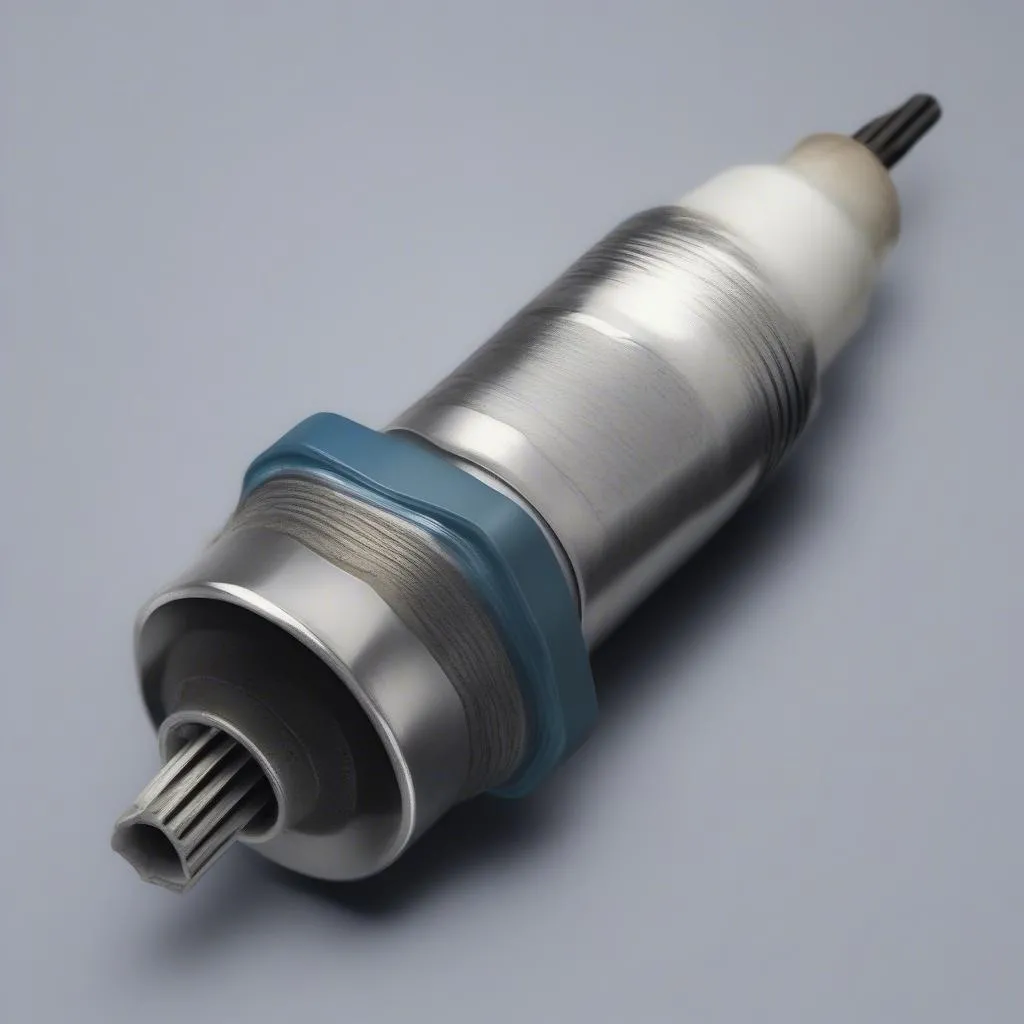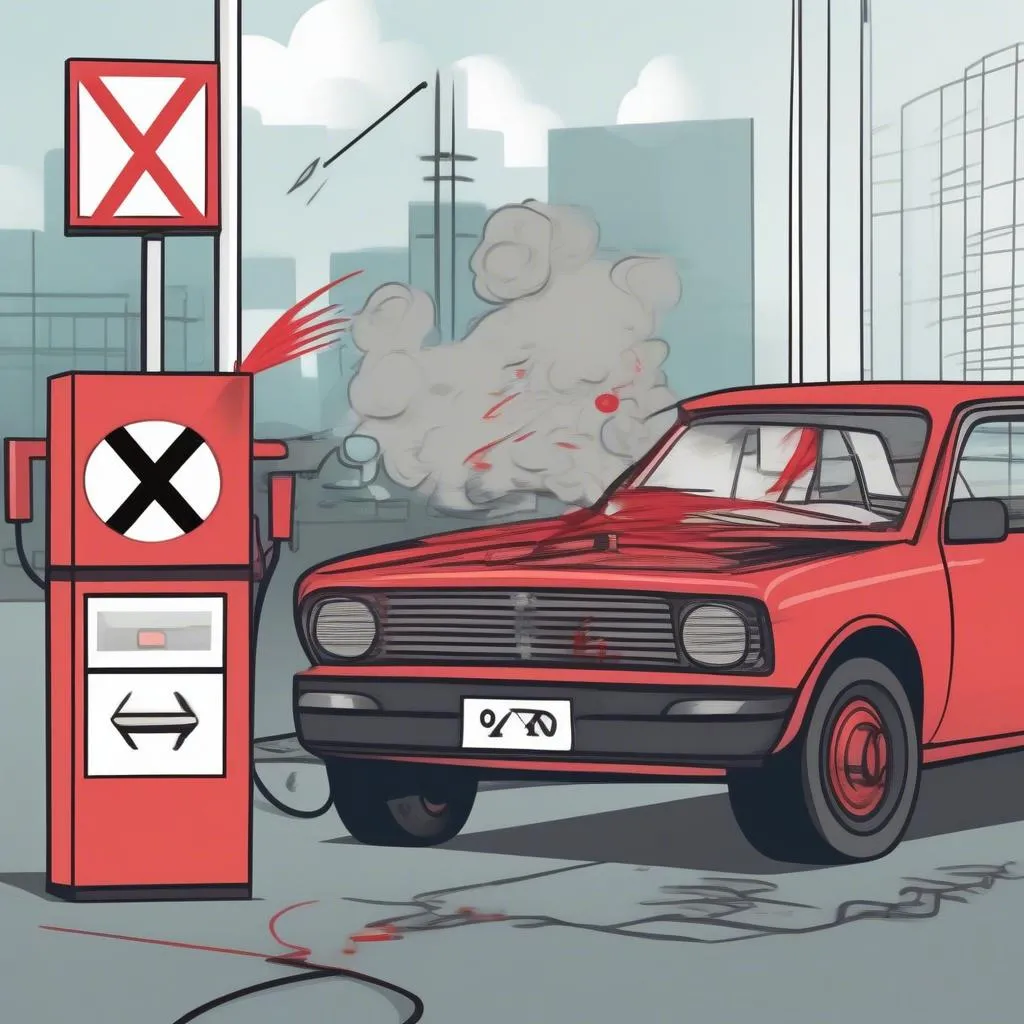Imagine this: You’re cruising down Sunset Boulevard in your trusty ’05 Pontiac Grand Am, California sun shining, when suddenly, the “Check Engine” light decides to ruin the vibe. You pull over, heart sinking, wondering what could be wrong. You grab your OBD scanner, plug it in, and bam—the cryptic code “P0131” stares back at you.
Don’t panic just yet! This scenario is more common than you might think, especially for Grand Am owners. That pesky P0131 code specifically relates to your oxygen sensor, a critical component of your car’s emission system. Let’s dive deeper into what this code means, why it pops up, and how to get you back on the road, code-free.
Decoding the P0131: What Does It Mean?
In simple terms, the P0131 code signals a problem with your oxygen sensor, particularly the one located before the catalytic converter (Bank 1, Sensor 1). This sensor’s job is vital: it measures the amount of oxygen in your exhaust gases, sending this crucial information to your car’s computer (the Engine Control Unit or ECU). The ECU then uses this data to adjust the air-to-fuel ratio for optimal engine performance and minimal emissions.
Now, when the P0131 code rears its ugly head, it means the ECU is receiving a signal from that oxygen sensor that’s outside of its normal operating range. This indicates a potential issue with the sensor itself or its related circuitry.
Why is My Check Engine Light On? Causes of a P0131 Code
Several culprits can trigger a P0131 code on your ’05 Grand Am. Here’s a breakdown of the usual suspects:
- Faulty Oxygen Sensor: This is the most common cause. Oxygen sensors, unfortunately, have a limited lifespan and can deteriorate over time due to constant exposure to high heat and exhaust gases.
- Wiring Issues: Damaged, corroded, or loose wiring connections between the oxygen sensor and the ECU can disrupt the signal flow, leading to the P0131 code.
- Exhaust Leaks: Leaks in your exhaust manifold, exhaust pipes, or around the oxygen sensor itself can allow excess oxygen to seep in, throwing off the sensor readings.
- Vacuum Leaks: Unmetered air entering the engine through vacuum leaks can disrupt the air-fuel mixture, impacting the oxygen sensor readings.
- Fuel System Problems: Issues with fuel pressure, a clogged fuel filter, or faulty fuel injectors can all affect combustion efficiency, potentially triggering the P0131 code.
 Faulty Oxygen Sensor
Faulty Oxygen Sensor
Getting Your Grand Am Back on Track: Addressing the P0131
Before you start throwing parts at the problem, remember a systematic approach is key.
- Visual Inspection: Start by visually inspecting the oxygen sensor and its wiring harness for any obvious damage, loose connections, or corrosion. Sometimes, a simple fix like tightening a loose connection can be the solution.
- Check for Exhaust Leaks: Carefully inspect your exhaust system for any signs of leaks, listening for hissing sounds or looking for visual cues like black soot deposits.
- Test the Oxygen Sensor: If no visual issues are apparent, using a digital multimeter to test the oxygen sensor’s voltage output can help determine if it’s functioning correctly.
- Diagnose Further: If you’re still unsure after these steps, it’s best to consult a qualified mechanic specializing in European cars. They have the expertise and diagnostic tools to pinpoint the root cause and recommend the appropriate repairs.
Don’t Ignore the Warning Signs: The Importance of Addressing P0131
Ignoring the P0131 code might seem tempting, especially if your car seems to be running fine. However, driving with a faulty oxygen sensor can lead to several consequences:
- Decreased Fuel Economy: A malfunctioning oxygen sensor can disrupt your engine’s air-fuel ratio, leading to reduced fuel efficiency and costing you more at the pump.
- Damaged Catalytic Converter: A rich fuel mixture caused by a faulty oxygen sensor can damage your catalytic converter, a costly component to replace.
- Failed Emissions Tests: In states with strict emissions regulations, a P0131 code will likely cause your car to fail an emissions test.
 Emissions Test Fail
Emissions Test Fail
FAQs about the P0131 Code
Q: Can I drive my car with a P0131 code?
A: While you might be able to drive for a short period, it’s not recommended. Driving with a faulty oxygen sensor can lead to further engine damage and reduced fuel efficiency.
Q: How much does it cost to fix a P0131 code?
A: The repair cost depends on the underlying cause. A simple oxygen sensor replacement can range from $200 to $400, while more complex issues like wiring repairs or ECU problems can cost significantly more.
Q: Can I replace the oxygen sensor myself?
A: If you’re mechanically inclined, replacing an oxygen sensor can be a DIY job. However, it’s crucial to have the correct tools and follow the proper procedures to avoid damaging the sensor or your vehicle.
Beyond the P0131 Code: Other Common Issues
While the P0131 code is a common headache for ’05 Grand Am owners, other issues can also plague this model. Here are a few to watch out for:
- P0442 (Evaporative Emission System Leak Detected): This code often indicates a small leak in the EVAP system, responsible for capturing fuel vapors.
- P0420 (Catalyst System Efficiency Below Threshold): This code suggests a problem with your catalytic converter’s efficiency, often requiring replacement.
- P0171 (System Too Lean Bank 1): This code points to a lean fuel mixture, which can have various causes, including vacuum leaks or faulty fuel injectors.
Need Expert Help with Your Car Diagnostics?
Dealing with car troubles can be stressful and time-consuming. If you’re struggling to diagnose and fix car issues yourself, remember help is just a message away!
Contact us on WhatsApp at +84767531508 for expert assistance with your car diagnostic needs. Our team of experienced automotive technicians is available 24/7 to provide remote support and guidance on installing and using diagnostic tools, troubleshooting error codes, and tackling various car repair issues.
Don’t let car problems keep you off the road. Reach out to us today, and let our experts help you get back behind the wheel with confidence.